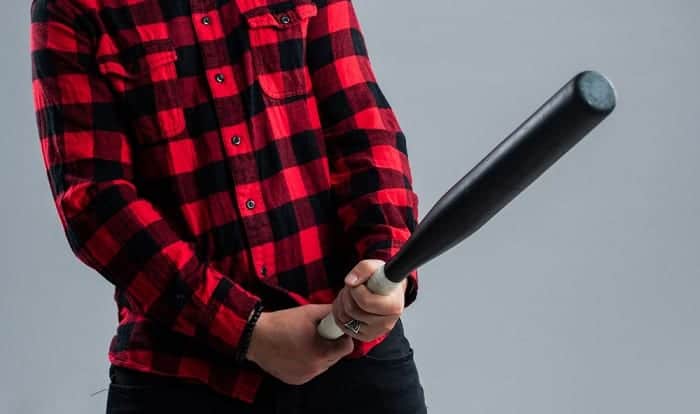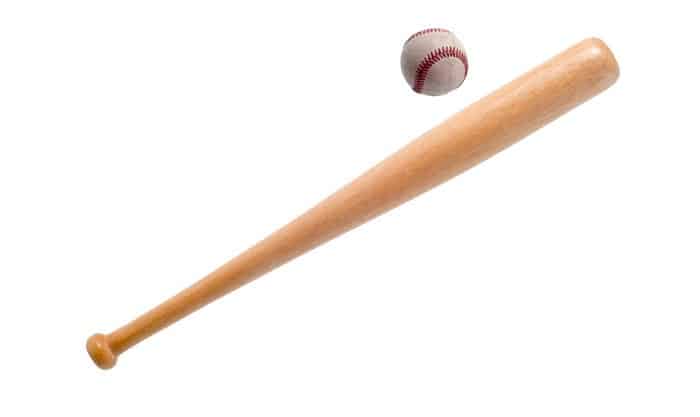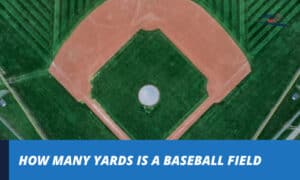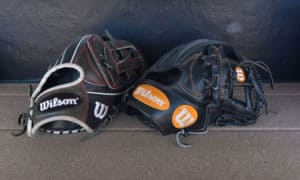Buying baseball bats requires effort because the quality of the bat highly determines your performance or your kid’s performance.
The latest trends in today’s bat purchasing see individuals referring to a youth baseball bat sizing chart.
But why youth? Why not kids or adults? We choose to focus on the youth baseball size because it is during this phase that size and weight transitions are commonplace.
Read on to learn more about the bat sizing chart and how to use it.
Contents
What is a Youth Baseball Bat Size Chart?
The youth baseball bat size chart functions as a guide for determining the perfect bat length for your body. A chart usually consists of variables such as age, league, bat length, and weight drop.
Like most charts, the baseball bat size chart exists for one purpose: to provide you the convenience of selecting the perfect baseball bat.
When was the Youth Baseball Bat Sizing Chart First Developed?
According to the Smithsonian magazine, before the 1870s, baseball bats came with diverse lengths, designs, thickness, etc.
But after the year 1870, regulations on the bat length dominated the press. Although no actual historical sources can tell the exact year the chart was developed, most leads point to the 1870s onwards.
Today, the chart acts as a reference for manufacturers, buyers, and players to secure the standard baseball bat length.
The standard baseball bat length according to the MLB rule book is up to 42 inches.
The standard maximum baseball bat diameter according to the MLB rule book is 2.61 inches.
The standard dimensions of the baseball bat would adjust based on the user’s age and corresponding body size. Youth baseball bats are usually 24-34 inches.
How Do I Size My Baseball Bat?
The size or dimensions of the baseball bat pertains to its overall weight drop. To size your bat, you must first calculate its weight drop. But even before you can identify its weight drop, you must first determine its weight and length.
1. Length
Use inches to measure the length of the bat. Measuring the bat requires sizing it from tip to tip — basically, from its knob to its end cap.
Longer bats will provide you with a fuller swing and longer reach. Thus, it enables you to hit the ball outside your plate. On the other hand, longer bats tend to be heavier. Using them would require much effort from your end.
Picking your bat based on length comes out as a tricky approach; consider the balance between size and mass. In this case, length never suffices as a sole determinant.
In the absence of a chart, you can instead test the bat for yourself by swinging it several times.
2. Weight
The baseball rule standardizes ounces (oz) as a unit for measuring bat weight. The bat’s weight is directly proportional to its length.
If you deduct the weight (in oz) from the length (in inches), you end up with the weight drop.
Note that the higher the weight drop, the lighter the bat.
If you have a 28-inch bat that weighs 20 ounces, you should end up with an 8 bat.
With a weight drop identified, you should refer to the youth bats size chart to match the bat to your age.
What are the Main Factors for Choosing My Perfect Bat?
When choosing your perfect bat, you must keep these two most important factors in mind (assuming that the sport we are playing here is baseball):
1. Player Preference
Preference can be decided after simulation. Thus, you will have to be comfortable, first and foremost, with the bat you are using.
Eventually, you will instantly know if the bat is your preference just by holding it. Swinging the bat should tell you if it is more or less perfect for you.
2. League Rules
The league rules also get to determine which bats are permitted per game. One league rule varies from another. The act of checking these governing bodies’ requirements when looking for your bat speeds up the whole process.
Other factors include manufacturing differences, in-game occurrences, and overall grip quality.
What are Recommended Weight Drops for a Youth Bat?
The recommended weight drops for a baseball bat include: -8, -9, -10, -11, -11.5, -12, and -13.
This given range strictly follows a median section between the lightest and heaviest body weights. Thus, these successive weight drops safely fall in the recommendable category in the youth baseball bat size chart.
How Do I Measure a Bat For My Kid?
To measure or match a bat to your kid, refer to the youth bat sizing procedure. Measuring the bat for a younger player (7-13 years) takes a more complex effort. That is because the youth phase is the most unstable of all the categories.
Here’s how to effectively use a baseball bat sizing chart:
Step 1. Determine your kid’s height
Have your kid wear their baseball shoes. Then, take your kid’s height. Your kid would presumably reach 3 ft. Use this as a baseline. With a 3 ft. measurement, use a 26-inch bat to match.
Every time your kid’s height reaches 4 inches beyond 3ft. 4 inches, add 1 inch for the bat. So for instance, if your kid’s height reaches 3 ft. and 8 inches, you are to add one more inch to the bat.
Step 2. Determine your kid’s weight
If your kid’s weight is around 27kg, match it with a bat that is 26-29 inches long.
If your kid’s weight is over 31 kg, match it with a 28-32-inch long bat.
Step 3. Refer to a youth bat sizing chart that uses age and league as variables
The variable for age determines a total of 7 ranges: under 7, 8-9, 10-11, 12-13, 14-15, 16-18, and 18-beyond.
These ranges identify with two leagues: the little/kid and the high school to college leagues. The little league covers ages 7-13, while the high school-college has 14-18+.
The youth bat length ranges from 24-32 inches for the little league, with bat drop weight by age yielding -13 to -9. On the other hand, the high school-college league features youth bat lengths from 31-34 inches, with a weight drop at -3 throughout.
Conclusion
Choosing the perfect bat takes complex calculations. Measuring the bat to a kid under the youth category doubles the demand for effort. Factors like preferences, league rules, and other regulations complicate the process.
Fortunately, the youth baseball bat sizing chart exists to ease your selection process. Yet, it still cannot solely suffice. Thus, you will need to balance this technicality with intuition. And, the best way to do it: test the bat yourself by swinging it!

Five years as a baseball player, my training approaches with this game give me the motivation to inspire and support young players more. Like all sports, we should start with the desire to have fun and maintain our resilience to strive better at any competition. But, of course, some of us want to have some fun and train for better health. It does not matter what your initial purpose is; I believe that most people ever holding on to the baseball bat will fall in love with the games as I do.
















